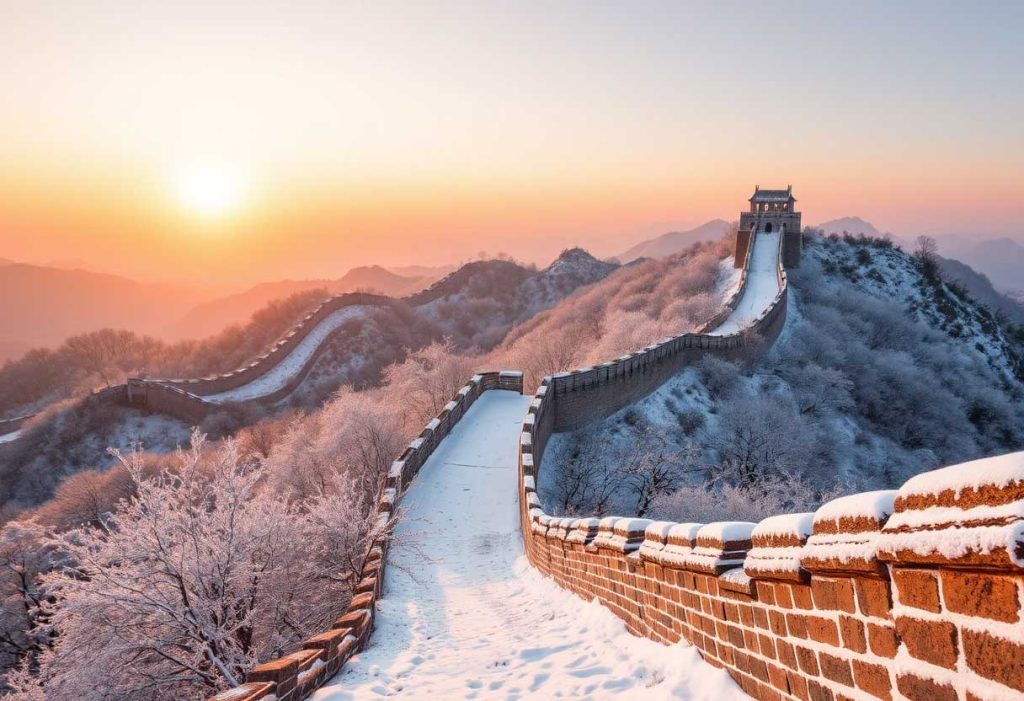The Great Wall of China stands as one of humanity’s most remarkable architectural feats and a symbol of resilience, ingenuity, and cultural pride. Spanning over 13,000 miles, this ancient structure winds through rugged mountains, lush valleys, and arid deserts, embodying centuries of history. For travelers, the Great Wall offers not only breathtaking vistas but also a journey back in time to an era of empires and epic tales. Visiting this iconic landmark is an experience that leaves an indelible impression, blending awe-inspiring scenery with profound historical insights.
Constructed primarily between the 7th and 17th centuries, the Great Wall served multiple purposes, including fortification, communication, and border control. It is a mosaic of walls, watchtowers, and fortresses, reflecting the dynasties that contributed to its construction. While the Wall is often associated with the Ming Dynasty, earlier sections date back to the Warring States period. The sheer scale of the Wall and the complexity of its construction, achieved without modern technology, testify to the extraordinary determination and skill of ancient Chinese engineers and laborers.
One of the most striking aspects of the Great Wall is its adaptability to the landscape. Unlike many man-made structures, the Wall integrates seamlessly with its natural surroundings. From the snow-capped peaks of Jiayu Pass to the verdant hills of Mutianyu, each segment of the Wall offers a unique perspective on China’s diverse geography. For many visitors, this harmony between architecture and nature is one of the most captivating features of the Wall. The changing seasons further enhance its beauty, with spring blossoms and autumn foliage providing vibrant contrasts to the Wall’s gray stone.
Beyond its aesthetic appeal, the Great Wall is steeped in historical significance. Originally conceived as a defensive barrier, it played a crucial role in protecting ancient China from invasions by nomadic tribes. The Wall also served as a conduit for communication and trade, particularly along the Silk Road. Today, it stands as a monument to the cultural exchange and military strategies of ancient civilizations. Walking along its battlements, visitors can almost hear the echoes of soldiers, merchants, and messengers who once traversed its paths.
For travelers visiting the Great Wall for the first time, choosing the right section to explore is an important consideration. Each segment of the Wall offers a different experience, from the bustling and restored stretches of Badaling to the tranquil and less-traveled paths of Simatai. Badaling, being the most accessible from Beijing, is ideal for those with limited time. It is well-preserved and equipped with amenities, making it a popular choice for families and tour groups. Meanwhile, Mutianyu, located further from the city, provides a quieter experience and stunning panoramic views, particularly from its watchtowers. Adventurous travelers might opt for the “wild” sections of the Wall, such as Jiankou, where the ruins remain untouched and the terrain is more challenging.
As visitors ascend the Wall, they are often struck by its sheer scale and the effort it must have taken to construct it. The Wall’s steps vary in size and incline, a reflection of its functional design rather than aesthetic considerations. Some sections are steep and require careful navigation, adding a sense of adventure to the journey. At the top, the rewards are plentiful. Panoramic views stretch out in all directions, offering a glimpse into the vastness of the Chinese landscape. Whether shrouded in mist or bathed in sunlight, the scenery is nothing short of spectacular.
While the Great Wall’s grandeur is undeniable, it is also a reminder of the sacrifices that went into its construction. Millions of laborers, including soldiers, peasants, and prisoners, toiled under harsh conditions to build the Wall. Many lost their lives in the process, leading to its somber nickname, “the longest cemetery on Earth.” This historical context adds a layer of solemnity to the experience of visiting the Wall. It is not just a marvel of engineering but also a testament to human endurance and the costs of ambition.
The Great Wall is more than a tourist destination; it is a bridge between the past and the present. Modern preservation efforts ensure that this UNESCO World Heritage Site remains intact for future generations. However, visitors also play a role in its preservation. Responsible tourism practices, such as avoiding littering and respecting the structure, are essential to maintaining the integrity of this global treasure.
No visit to China is complete without a trip to the Great Wall. It is a place where history comes alive, where the beauty of the natural world meets the ingenuity of human endeavor. Whether standing atop a watchtower, gazing out at the sprawling landscape, or simply contemplating the Wall’s rich history, visitors are sure to be inspired. The Great Wall of China is not just a relic of the past; it is a living legacy, inviting people from around the world to connect with its timeless story.

